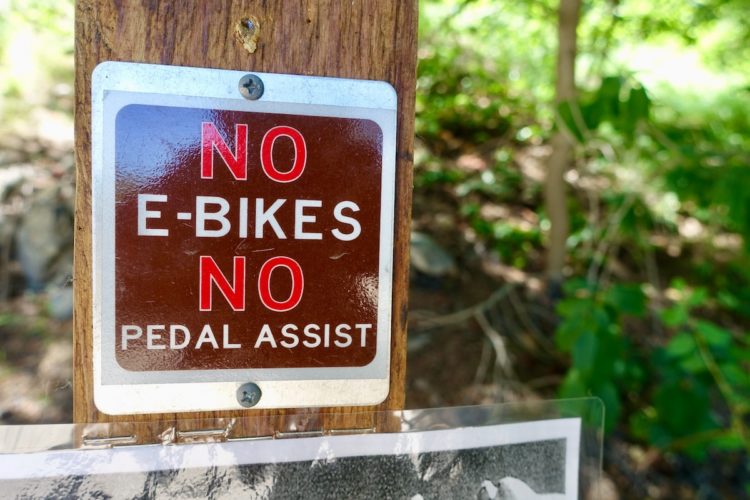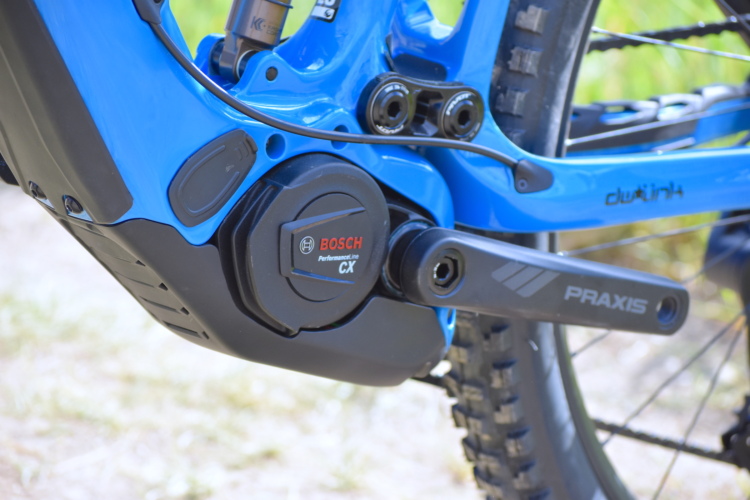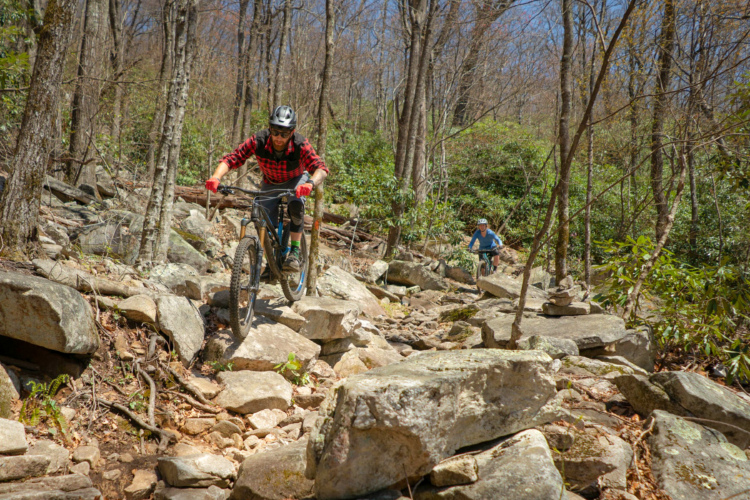Unlike the trend analysis articles we’ve been posting recently, I have no hard data on this trend but it’s one that appears to be growing in my area: unauthorized mountain bike trail construction. For example, in one local park / open space area, there were two separate groups of unofficial trail builders working different areas without knowledge of the other. And across town there’s a mysterious trail builder with a knack for finding large plots of land to build intricate and elegant singletrack networks.
I suspect unofficial trail building is happening with more frequency around the US, though it would be hard to put a finger on just how many miles of unauthorized singletrack are being built. In California alone, officials estimate there are 13,000 miles of unofficial trails on state and federal land (that doesn’t include private property or local parks). Compare that to the less than 5,000 miles of official MTB trails listed in the singletracks database for California and it’s clear there’s a big disconnect.
Considering all the new, purpose-built MTB trails being funded and built by local and national organizations like IMBA, it’s even more surprising to see so many unauthorized trails popping up. It seems the perfect storm of a bad economy, sophisticated tech tools, and even legitimate trail building knowledge may be fueling the boom.
The Economy
The recent downturn in the US economy was largely caused by problems in the real estate market which wiped out developers and investors in record numbers. The result: many development projects stalled, leaving pockets of raw land undeveloped for years as banks and investors tried to figure out what to do. In many cases this meant less oversight of the land itself and trial builders had plenty of time to move in and take over. Plus, without the threat ofimminentdevelopment, builders have been more willing to invest in trails they figure will be around for a long time.
State and local governments have been hit by the bad economy as well, with parks and recreation departments facing budget cuts and shortfalls. This means less money for enforcement and remediation once (if) new social trails are discovered.
Although not expressly related to the economy, there’s also been a trend over the last decade toward urban migration in larger cities like Atlanta. This means young professionals, the type of folks who like to ride (and whose kids ride), are finding themselves living in areas without access to trails nearby. IMBA recognizes this and is working on finding ways to site urban trail systems and compact pump tracks, but in the meantime, some are taking the situation into their own hands.
Technology
Do you remember what it was like before we had tools like MapQuest and Google Earth? To unofficial trailbuilders living in urban and suburban areas, Google Earth is an useful tool for identifying pockets of raw land to be explored.
GPS units can also be helpful for laying out tight trail networks that make the most out of a small parcel of land. Although I don’t know of any unauthorized trailbuilders who do this, it’s not hard to imagine sketching out a rough trail layout in Google Earth and using a GPS on the ground to route the trail.
Clearly the internet itself is also enabling some of the construction as well, linking up groups of riders for unofficial “work days” and providing a venue for swapping knowledge and information.
Trail Building Knowledge
IMBA and local clubs have been working hard over the last several years to codify decades of sustainable trail building knowledge into free hands-on classes and books like the popular “Trail Solutions” guide to building sweet singletrack. The information found in these classes and books is powerful and useful to both the sanctioned and unsanctioned builder alike. The upshot: many unauthorized trails are actually being constructed based on sustainable, IMBA-standards – except for the critical part about getting permission before building. It’s not uncommon to find drainage systems, grade reversals, and even benchcuts on many newer, unofficial trails.
Going Forward
So what does all of this mean? For starters, I want to make it clear that unauthorized trails are just that – unauthorized. The penalties for building a trail without permission range from fines to even jail time for the worst offenders. Heck, you can even get jail time just for RIDING an unauthorized trail.
There’s also the fact that unauthorized trail building can hurt the efforts of local trail advocates. It would be a shame for a 1-mile trail built by a few individuals to derail an agreement to build a legitimate 20-mile system nearby but that’s a real possibility. Working with government land managers takes time to build trust and illegal trail building destroys that trust more quickly than it can be re-built.
The good news is, the same trends involving the economy, technology, and trail building “science” can be used to create sanctioned trails as well! Depressed land prices make it possible for governments or even local citizens to buy up land for parks while recreation departments are more open to having volunteers take the reigns on new (authorized) trail building projects. The only difference is, official trail projects can take a little longer to get started but once the permissions are in place, the end result is the same: new trails.
Unfortunately I don’t have an answer to the title of this post; but just imagine what could be accomplished if all the efforts to build illegal trails went toward sanctioned trail projects! One way to scratch your trail-building itch is to get involved with your local club to make new trails happen.












12 Comments
Mar 6, 2012
Mar 6, 2012
So there's white, there's black, and there are a whole lot of shades of gray...
Mar 6, 2012
Mar 6, 2012
Recently here in Co Springs, a bandit trail was discovered leading into the Garden of the Gods. Anti-MTB forces moved quickly to make political hay out of this one. Fortunately Medicine Wheel, the local MTB advocacy group immediately (like that very weekend) mobilized a small army of concerned bikers to volunteer and, in half a day erased all evidence of the trail and minimized any political fallout, and even made a few new connections.
Trek7K, I really like your bottom line; " . . .just imagine what could be accomplished if all the efforts to build illegal trails went toward sanctioned trail projects! One way to scratch your trail-building itch is to get involved with your local club to make new trails happen." That's really the best possible approach. We should all bear in mind that, in this era of shrinking gov't budgets at every level, land managers are becoming more willing to work with volunteers to accomplish trial projects--MTBers should be at the forefront of that trend--if we're not, we're missing a golden opportunity and have no grounds to complain if we don't like the outcome. The old "Well, I had to build a bandit trail because there aren't any legit trails I like" just won't wash and actually hurts us all.
(btw, that illegal trail in the post looks nicely sustainable--adequate outslope, manageable grade--don't think I've ever seen a bandit trail of that quality.)
Mar 7, 2012
Mar 7, 2012
I think we can find places, and a lot of them, where mountain biking, hiking and other outdoor activities can be enjoyed responsibly without tearing up the mountain just because "nobody is using it." The mountains around my home town used to be gorgeous, then the gas companies came in and totally scarred them up. I'm not a hard core conservationist by any means, but a line has to be drawn somewhere. The penalty for building and/or using illegal trails needs to be a lot steeper IMHO.
Mar 8, 2012
Mar 6, 2012
Even though illegals trails are illegal, I think it's cool some are built to IMBA standards (well, almost.) If the illegal trail is sustainable, hopefully it has a better chance of becoming legal.
Slightly off-topic question: What's the thing in the picture? It looks like a cross between traffic cones and a scarecrow...I really need to get my eyes checked!
Mar 6, 2012
Mar 6, 2012
Again, what makes a trail "official" or "unofficial"?
Mar 7, 2012
Mar 12, 2012